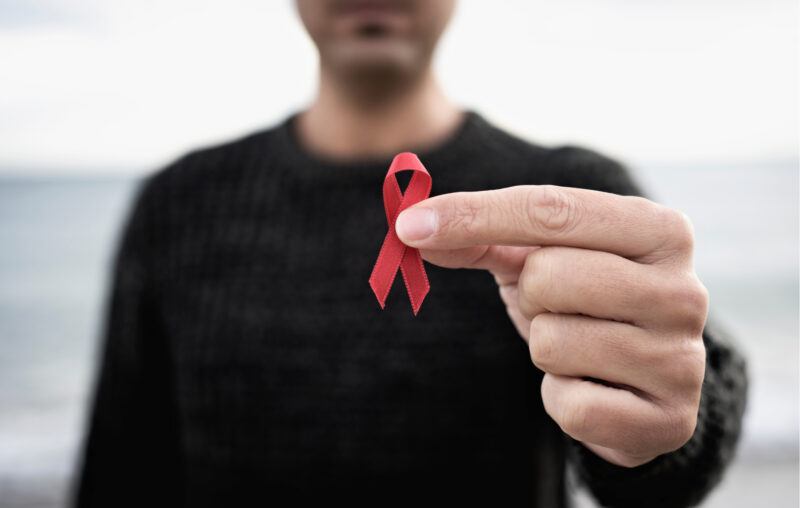A Year of Backsliding in the Fight Against HIV/AIDS

December 1 is World AIDS Day. It seeks to bring awareness to the ongoing HIV/AIDS epidemic, which has killed an estimated 32.7 million people since the early 1980s. Though AIDS-related deaths peaked in 2004, the disease’s impact remains high. In 2019, around 690,000 people died of AIDS-related illnesses and 38 million people were living with HIV worldwide.
Global health authorities had high expectations for this year. Back in 2014, the Joint United Nations Programme on HIV/AIDS (UNAIDS) set three goals to be met by the end of 2020. The so-called 90-90-90 targets were the following: One, 90 percent of all people with HIV should know their HIV status; two, 90 percent of those diagnosed with HIV should receive antiretroviral therapy; and three, 90 percent of those receiving antiretroviral therapy should achieve “undetectable” status, meaning they can no longer pass on the virus to others.
Only a few countries are on track to meet these benchmarks. Globally, four in five people with HIV know their HIV status; two in three receive antiretroviral therapy; and 59 percent are undetectable.
The 90-90-90 targets were already going to be unattainable by the end of 2020, but they were stifled entirely when nations began to impose lockdowns to control the spread of Covid-19. Now, looking back on a year that the United Nations earmarked as a major milestone in the fight against HIV/AIDS, it is clear that hard-earned progress has been lost.
Early detection and vigilance are invaluable in treating HIV. Once people with HIV are diagnosed and begin an antiretroviral therapy regimen, the virus rarely progresses to AIDS. In order to stave off AIDS, however, patients must adhere to medication schedules. Otherwise, their immune systems decline and they are left susceptible to deadly opportunistic infections. Proper treatment also ensures that people with HIV cannot transmit the virus to others.
However, with border closures and interrupted supply chains, medication quickly became hard to come by in some parts of the world. In July, UNAIDS warned that interrupting HIV services could set the battle against the disease back by a decade or more. Those fears appear to be coming true––as of August, about 1 in 4 people with HIV reported having difficulty acquiring medication, and as of October, three-quarters of HIV programs supported by the Global Fund had experienced “moderate” to “very high” disruptions to service.
July’s International AIDS Conference featured little hope for HIV mitigation. Researchers reported that 36 countries––home to 45 percent of the world’s antiretroviral therapy recipients––experienced disruptions to their medication provision. Additionally, 23 countries had seen disruptions in HIV viral load monitoring, 24 were at risk of running out of their most critical drugs, and 38 faced challenges to their testing capacities.
Sub-Saharan Africa has long been the epicenter of the AIDS crisis, but efforts to combat Covid-19 have reshuffled critical medical resources and prevented routine treatment of HIV. In October, Nigeria’s National Agency for the Control of AIDS (NACA) said that lockdowns and subsequent interruptions to antiretroviral provision may have caused 430,000 HIV/AIDS deaths. To date, Africa has seen just over 51,000 Covid-19 deaths. In order to make up for this year’s lost progress and meet the UN’s HIV/AIDS targets in Nigeria alone, NACA head Gambo Gumel Aliyu stated that an additional $2.4 billion would be needed moving forward.
Even the United States, with its sophisticated medical infrastructure, has struggled to handle both diseases. Almost every health department in the country has reoriented personnel toward Covid-19 response, including three-quarters of HIV prevention program staff. Research studies and drug trials have stopped because participants cannot meet in person and many community organizations are in jeopardy as their funding dries up in the struggling economy.
There’s yet another concerning component to this tradeoff. Though data is limited, it is believed that HIV-positive people who are on effective treatment have no higher risk of becoming very sick with Covid-19 than people without HIV. Those without proper access to antiretroviral therapy, however, are left vulnerable to those ill effects. By this account, interrupting the fight against HIV is worsening the fight against Covid-19.
Since the beginning of the Covid-19 pandemic, public health experts have warned about the dangers of ignoring other epidemiological efforts. UNAIDS Executive Director Winnie Byanyima rightly said that “no one disease should be fought at the expense of the other.” This is clearly happening with HIV, and it will take years to pick up the pieces––far beyond the present Covid-19 pandemic.
Rather than celebrating the progress made against this devastating, incurable disease, this year’s World AIDS Day is marked with a note of mourning. Lockdowns may shelter people from Covid-19, but no matter how well-intended they are, their burden inevitably falls on the most vulnerable. Only time will reveal how deadly these disruptions have been to the world’s HIV-positive population––but the prognosis is bleak.











